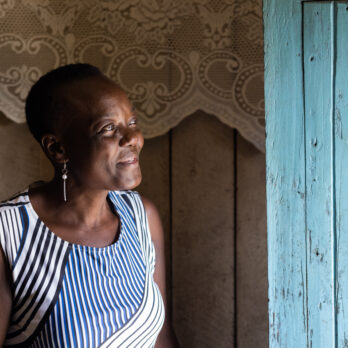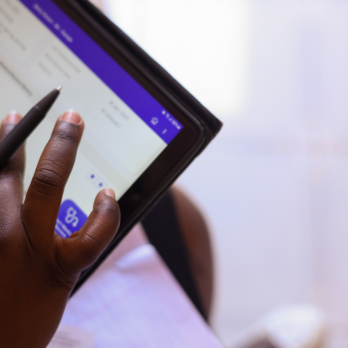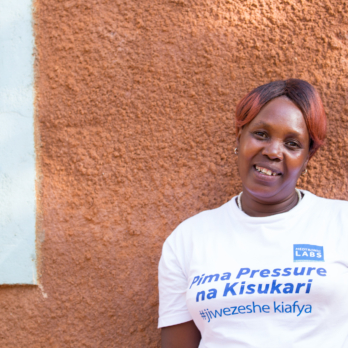As COVID-19 continues to sweep across the world, healthcare systems, livelihoods and day-to day interactions have been in flux. However, one thing that has remained constant in the lives of our patients is the persistence of their chronic conditions. In a world where care resources must be prioritized to address an infectious disease, where do non-communicable diseases fit in?
RISK FOR PATIENTS WITH CHRONIC DISEASE
The emergence of initial data has revealed that infectious and non-infectious disease are more related than they sound. A recent published study showed that of 5,700 COVID-19 patients admitted to hospitals in New York City, 57% had comorbid hypertension and 34% had diabetes.[1] Not only do the majority of hospitalized COVID-19 patients have comorbidities, but they also are more likely to have worse prognosis after being diagnosed with COVID-19. A study of 1,590 patients in China showed that patients with COPD, diabetes, and hypertension were more likely to be admitted to the ICU, be invasively ventilated, or die than those without[2]. While current retrospective data may not be perfect, directional studies of cases to date suggest patterns that are worth recognizing. The World Health Organization has widely acknowledged that patients “with comorbidities, such as cardiovascular disease and diabetes mellitus, have increased risk of severe disease and mortality. They may present with mild symptoms but have high risk of deterioration”[3].
The risk for patients with chronic disease during the pandemic doesn’t end with COVID-infection. Keeping these conditions under control is more important than ever as overburdened health systems may struggle to treat normally addressable complications such as stroke, heart attacks, and COPD-related pneumonia. Patients may also be fearful of seeking necessary healthcare during this time. Evidence from Sierra Leone during the 2014 Ebola epidemic showed that a 50% decrease in healthcare utilization may have resulted in 2,800 excess deaths from non-Ebola causes[4].
For those managing chronic diseases, the COVID-19 pandemic poses a double burden – a need to manage non-communicable disease while simultaneously minimizing risk of infectious disease.
INCREASED CHALLENGES FOR LOW-INCOME COMMUNITIES
The communities we serve have been at increased risk for non-communicable disease but are now facing this double burden as they navigate the complexities of managing their conditions amidst fear of COVID infection, lack of consistent information, and mixed abilities to pay for the medications they require. At Medtronic Labs, our local teams have spoken to our patients to hear the challenges they are facing now, and there are a few recurring themes.
Confusing information: In countries like India and Kenya, WhatsApp and social media are among the most common forms of access to information. However, their widespread accessibility comes with the pitfalls of unregulated forwarded messages. In particular, home remedies, herbal alternatives to handwashing, and “what to eat to become immune” have infiltrated smartphones and left our patients confused about which precautions are most important to maintain their safety. Given their susceptibility to poor coronavirus outcomes, any level of ambiguity in self-protection poses a risk.
Ability to access and pay for medications: Many of our patients are daily wage workers whose livelihoods cannot continue amidst the necessary measures of social distancing and country lockdowns. While each paycheck helped them get access to the medications they needed, the absence of that paycheck has left them struggling to afford stockpiles of food to stay at home, let alone weeks-worth of medication. When every trip out of their home is a risk to their health, many are weighing the possibility of skipping medications.
Change in routine: Like many of us, our patients are adjusting to change. Cooking three meals a day in your home can take a toll on anyone, but has been increasingly challenging for those trying to main a hypertension and diabetes-friendly diet. Access to and affordability of healthy foods is more challenging than ever as local markets face shortages and struggle to keep adequate stock. On top of that, our patients miss the social interactions, regularity, and care provided by the Medtronic LABS programs in which they participate.
HOW WE’RE HELPING
Like many other businesses around the world, we have been adjusting our program operations to fit the evolving needs of our patients. In the context of these new challenges, we are providing additional resources to support those with non-communicable disease during this time.
Providing consistent, personalized advice: Members of Prerna (India) and Empower Health (Kenya and Ghana) have been receiving personalized phone calls from our community health workers (CHWs). In these regular conversations, CHWs clarify questions on proper hygiene, eating habits, and dispel misinformation about the spread of COVID-19.
Providing free medications: In addition to providing advice, our CHWs are reducing the burden of getting access to medications by delivering two to four week supplies of each patient’s medications to their homes – free of charge.
Creating contact-free spaces for support: We recognize that lockdowns and self-isolation can be lonely and frustrating for everyone we serve. To provide continued support and keep our patients connected with each other, we are exploring new avenues of e-gathering. Via CHW-moderated WhatsApp groups, patients can share stories with each other while receiving continued medical advice on management of their conditions.
LOOKING FORWARD
Our work in this new world context has just begun. We believe that partnership across technologies, industries, and communities will be vital to deliver the type of support necessary for patients with non-communicable disease.
By Megha Kosaraju
NOTES
[1] Richardson, Safiya, Jamie S. Hirsch, Mangala Narasimhan, James M. Crawford, Thomas McGinn, Karina W. Davidson, Douglas P. Barnaby, et al. “Presenting Characteristics, Comorbidities, and Outcomes Among 5700 Patients Hospitalized With COVID-19 in the New York City Area.” JAMA, April 22, 2020. https://doi.org/10.1001/jama.2020.6775.
[2] Guan, Wei-jie, Wen-hua Liang, Yi Zhao, Heng-rui Liang, Zi-sheng Chen, Yi-min Li, Xiao-qing Liu, et al. “Comorbidity and Its Impact on 1590 Patients with Covid-19 in China: A Nationwide Analysis.” The European Respiratory Journal, March 26, 2020. https://doi.org/10.1183/13993003.00547-2020.
[3] “Clinical Management of Severe Acute Respiratory Infection When COVID-19 Is Suspected.” Accessed April 23, 2020. https://www.who.int/publications-detail/clinical-management-of-severe-acute-respiratory-infection-when-novel-coronavirus-(ncov)-infection-is-suspected.
[4] Sochas, Laura, Andrew Amos Channon, and Sara Nam. “Counting Indirect Crisis-Related Deaths in the Context of a Low-Resilience Health System: The Case of Maternal and Neonatal Health during the Ebola Epidemic in Sierra Leone.” Health Policy and Planning 32, no. suppl_3 (November 1, 2017): iii32–39. https://doi.org/10.1093/heapol/czx108.


